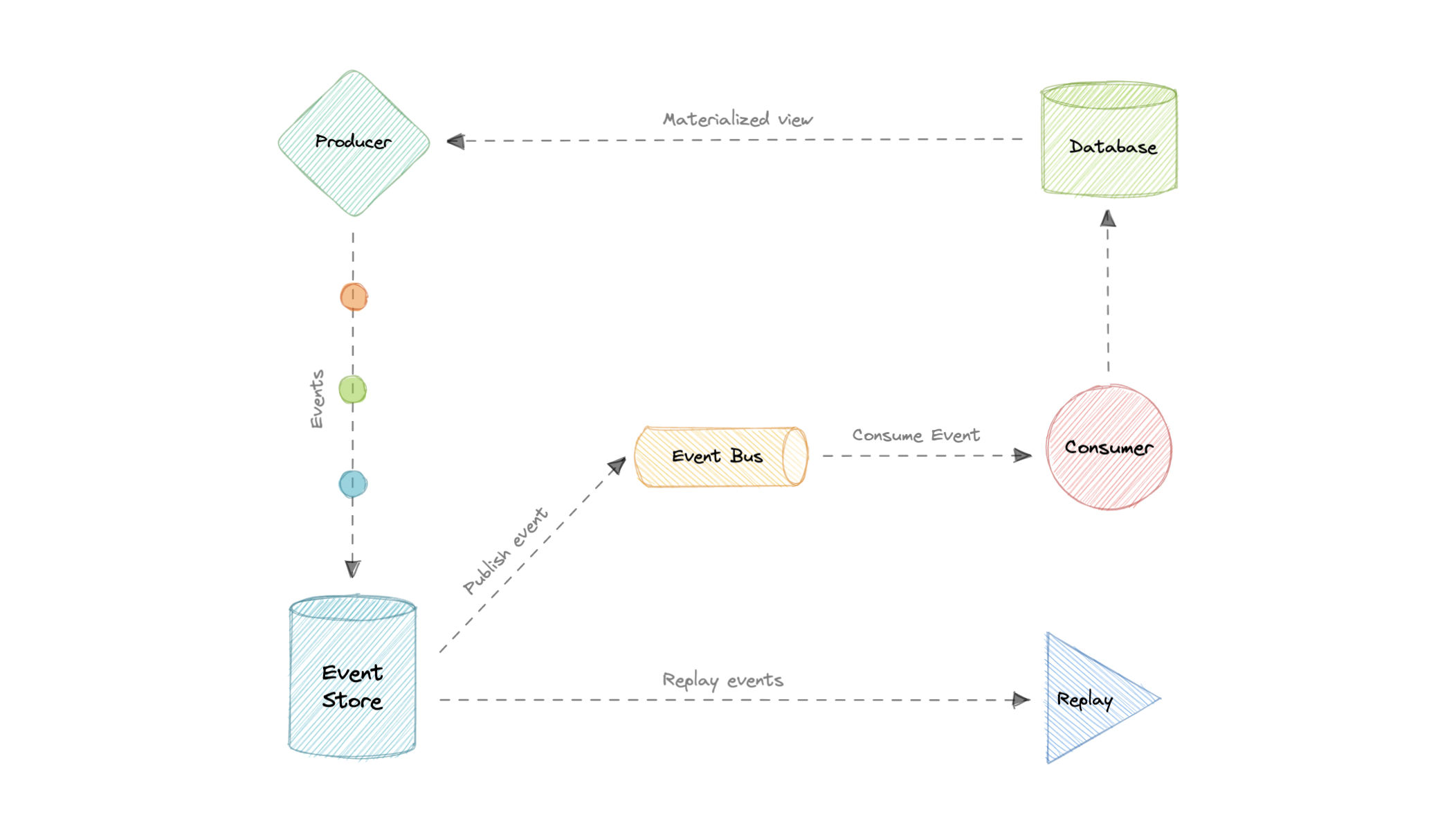event sourcing

This can simplify tasks in complex domains, by avoiding the need to synchronize the data model and the business domain, while improving performance, scalability, and responsiveness. It can also provide consistency for transactional data, and maintain full audit trails and history that can enable compensating actions.
Event sourcing vs Event-Driven Architecture (EDA)
Event sourcing is seemingly constantly being confused with event-driven architecture. Event-driven architecture is about using events to communicate between service boundaries. Generally, leveraging a message broker to publish and consume events asynchronously within other boundaries.
Whereas, event sourcing is about using events as a state, which is a different approach to storing data. Rather than storing the current state, we’re instead going to be storing events. Also, event sourcing is one of the several patterns to implement an event-driven architecture.
Advantages
Let’s discuss some advantages of using event sourcing:
- Excellent for real-time data reporting.
- Great for fail-safety, data can be reconstituted from the event store.
- Extremely flexible, any type of message can be stored.
- Preferred way of achieving audit logs functionality for high compliance systems.
Disadvantages
Following are the disadvantages of event sourcing:
- Requires an extremely efficient network infrastructure.
- Requires a reliable way to control message formats, such as a schema registry.
- Different events will contain different payloads.
